collet pipe fitting
To ensure uninterrupted water supply to apartment buildings, plastic pipes are often used. They gained popularity due to their long service life, special reliability and safety in operation. In addition, the installation of plastic pipes is quite simple and quick due to their flexible design.
However, such pipes provide for connecting fasteners with each other, as well as with other equipment for the plumbing system. As a result of this, the question will certainly arise: how to choose the most ideal option so that, in addition, it will serve for a long time and be easy to install? The answer is simple - such an important element will be collet fittings, time-tested and simple connecting devices. For copper pipes, the use of collet fittings is quite rare, which is required when a certain flexibility of the material is needed.
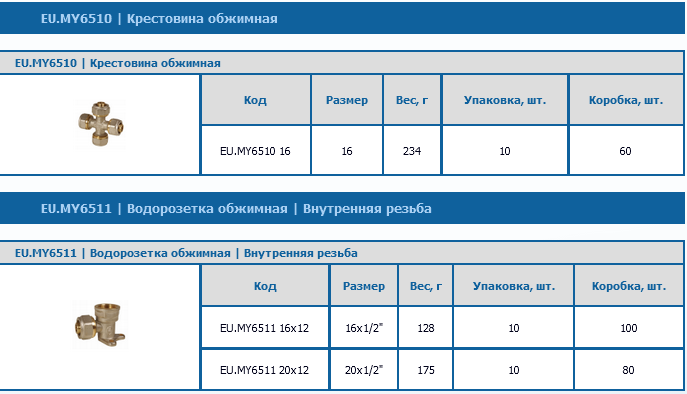
double water outlet
How do collet fittings connect plastic pipes?
In order to understand the technology a little, it is necessary to clarify what exactly the collet and the fitting are. The collet is a specific split sleeve with a spring property, which is quite convenient to use when different methods connecting products in the form of a cylinder. The collet presses on the space inside the pipe, thereby clamping the outside of the pipe to the fitting chuck. For this reason, this type of fitting is called clamping.
![]()
collet for crimp tubing
Directly a collet fitting, in its structure, is a kind of adapter, in another way a connecting sample in pipeline systems for various purposes. Suitable for connecting pipes of the same size, as well as different in the transverse dimension, in addition, it is used in corner joints and in pipes that require combination with other mechanisms for plumbing. For example: water meters, all kinds of filters, and more.
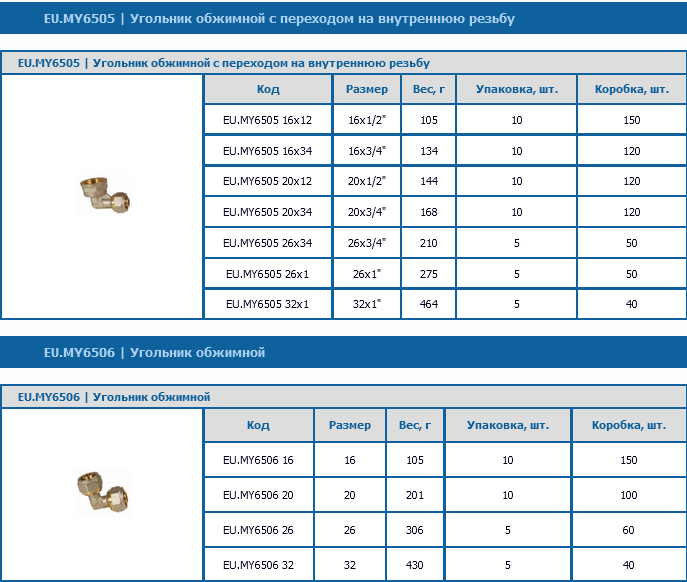
collet dimensions
And the fact that the internal pressure of the collet and the external thread of the fitting chuck are more reliable and strong leaves no doubt. Making a decision about their inclusion in the work will help in the future, to do without problems and constant repairs, which is achieved by a high-quality and sealed coupling.
The installation of such connecting parts allows assembly without the involvement of qualified specialists, because it does not require special skills. Also, you won't need any technical equipment that only plumbers own. The most important thing is to carefully approach the choice of fittings, not forgetting about the size of the pipes.
In the case of connecting a pipe with a nut tool, you will have to buy a fitting part, on one side of which there is a collet, and on the other side there is a thread of a suitable diameter or a nut. Do not worry about the wrong selection of a collet fitting, because all the latest technical accessories and elements are supplied with standard parameters by default.
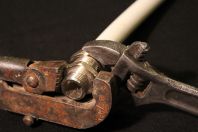
tighten the nut with a wrench
After the size is selected, the collet is inserted into the inside of the pipe, then the outer fitting nut is tightened with an adjustable wrench. This process must be carried out as carefully as possible, because this step determines how tightly the pipe is clamped and whether it is fully fixed. Next, you need to repeat the procedure with the pipe, which must be attached from the back.
As the entire structure is being installed, it is important not to forget that a collet fitting is a powerful enough pressure on the parts to be joined from both sides. Therefore, if these parts are made of plastic, then it is necessary to adjust the clamp gradually and with particular accuracy.
It is not uncommon for the outer nut to be pulled over, causing the plastic pipe to burst. In order to avoid such an unpleasant situation, experts advise you to balance your own efforts, which are applied at the time of screwing the nut.

collet fitting tee
Features of collet fittings
There are two types of collet fittings:
- designed for semi-solid structures and fittings for solid elements;
- for semi-hard and soft systems.
Both of these types are quite widely used in everyday life to connect various types of pipes. And all again because of the significant simplification of the installation. With regards to the mounting tool, all that is required is:
- scissors;
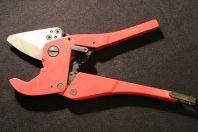
Scissors for cutting metal-plastic pipes.
- special beveller;
- spanners different sizes (if necessary);
- calibrator.

calibrator for metal-plastic pipes

Collet structure for pipes
Calibrators facilitate a smooth transition between pipeline elements with different diameters. They are presented in all sizes, so you can pick up without any problems. The chamfer is used for surface cleaning and chamfering from the inside of the hole.

collet fitting
The applied combination of such components makes the entire plastic piping system collapsible. In addition, a kind of maintenance is periodically required, which consists in tightening the nut. Push-in fittings are manufactured in accordance with GOST from a brass alloy. This material provides the required corrosion resistance. Their manufacturing method involves the mandatory method of hot stamping from blanks.
Directly when installing polyethylene pipes, by tradition, clamping fittings are used, which are absent. The remaining structure of the crimp fitting, in combination with polyethylene elements, does not differ at all from the ordinary brass one, which is practiced in installation works with metal-plastic composite devices.

clamping collet for pipes
How to choose
In general, when buying fittings, you should first of all choose high-quality products, because they play the main role in drainage systems, heating, sewerage and water supply. It is also worth considering the maximum permitted temperature of the internal filler during operation and the level of constant pressure in the pipes.
If you make simple calculations on the amount of effort expended, the price of the product and the necessary tool, and as a result, obtaining a high-quality pipe connection, then, of course, we can safely say that collet fittings are the best effective, affordable and convenient tool.
When laying various kinds of pipelines, fittings are irreplaceable elements. They are connecting parts that are installed in places of transitions to a different diameter, turns, branches, or simply connect two pipes.
Due to the presence of special parts, it becomes possible to seal off the pipeline and carry out other auxiliary purposes.
Fittings classification
Modern connecting elements are divided into types regarding the features of the application, device and material of manufacture.
If we talk about the material of manufacture, then fittings are:
- Metallic:
- From ferrous metals (cast iron, steel);
- From non-ferrous metals (copper or brass fitting for HDPE pipes).
- Plastic.
With regard to the features of installation, there are:
- Threaded (fastened with a thread and are the most common).
- Welded (fastened by gas welding).
- Press fittings (reliable, but requiring a special crimping tool).
- Collet (using a collet connection, O-rings are used for fixing).
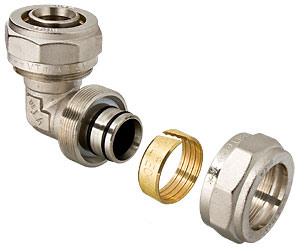
It is about the collet fitting that we will talk about in this article.
About collet connectors
The main design feature of such parts is the presence of a special sealing ring (or two), which allows for reliable fixation and sealing of the pipeline. This ring automatically grips the pipe when it is inserted into the fitting, making it very easy to install these systems.
In order to remove the hose from this element, you just need to make light pressure on the O-ring, which should be pressed towards the fitting. As you can see, pneumatic collet fittings are very easy to install, although this simplicity has its drawbacks.
For example, only durable hoses and water pipes made of polyurethane and polyethylene are suitable for fixing in this way. Soft pVC pipes for sewerage can be deformed under the pressure of the sealing ring, which will lead to depressurization of the system. However, this will not happen if you use the connectors as intended.
Collet Fittings Application
Collet or compression fittings are used in a wide variety of work areas.
Their main characteristics are:
- The ability to transport various kinds of working media, the temperature of which does not exceed 175 degrees Celsius, and the working pressure is 1.6 MPa.
- The bore diameter of such parts varies from 8 to 100 mm along the inner bore.
- Acceptable transported media include gases, solvents, hydraulic oil, water, etc.
Types of collet connecting elements

Like other connecting parts, collet can be of the following types:
- Coupling or straight collet fitting... Used to connect unidirectional pipelines with the same diameter.
- Transition fitting - serves to fasten the ends of pipes of different diameters.
- Angle, bend - are used to create turns of the structure from 45 to 120 degrees.
- Crosspiece... Thanks to this element, branching is made in two directions.
- Tee - used for one-way branching.
- Fitting - adapter from pipe to hose.
- Dummya - is attached to the ends of the pipes.
Installation technology
The most common installation method for this type of system is with crimp connectors. This popularity is due to the ease of installation, a small list necessary tools, and the price of materials is also far from the last factor.
The installation instructions provide for the presence of such tools and devices:
- Scissors for metal-plastic (pictured below).

Advice!
In the event that you do not have scissors, and the amount of work carried out is small, then you can use an ordinary hacksaw for metal.
However, the place of the saw cut must necessarily be processed with a special sweep or coarse sandpaper.
- Calibrator.
- Swedes or wrenches.
- We cut the pipe using special scissors or a hacksaw for metal. Remember to keep the cut straight.
- We clean the place of cut from burrs.
- Next, you should align the hole with a calibrator, since after the cut can have an oval shape.
Installation work

- After going through the previous steps, the pipe should be free of burrs, have a smooth end and an internal chamfer, which will ensure the integrity of the fitting seals when put on.
- Having cleaned the end, we put a metal crimp ring in place of the cut.
- Connect the body of the part to the pipe. Wear it very carefully so as not to damage the rubber seals located on the stem.
Advice!
In order to ensure an easier fit of the connector body with the pipe, moisten the attachment point with water.
This will protect the rubber seals from slipping and tearing.
- First, with your hands, and then with a wrench, tighten the nut located on the body of the connecting part. Tighten gently but firmly. At the moment when the nut is already securely fastened, you will hear a characteristic metal creak.
Advice!
If the fitting is of poor quality, the ferrule may pop out from under the nut.
In this case, it is necessary to replace the connecting element.

It is extremely undesirable to install crimping elements in grooves and hard-to-reach places.
Conclusion
Installing pipes using collet fittings is one of the most common installation methods. You can easily mount such a system yourself, while saving money on the services of a master, and the system you have installed will not know any breakdowns for many years.
More information on this topic is contained in the video in this article.
Plastic pipes are becoming more and more popular every year, they are actively used for organizing networks of both cold and hot water supply, as well as for installation heating systems... To combine such pipes into systems and to connect them to plumbing devices, various connecting elements are used, which include a collet clamp. Collet type fittings, which do not require special tools and sophisticated equipment, are capable of providing reliable and durable connection of pipeline elements for various purposes. Such clamps can be used both for installing pipelines and for connecting to the latest plumbing devices.
What are collet and fitting
To understand how collet fittings work, you must first understand what collet and fitting are. The collet, the design of which is optimal for using it to connect cylindrical parts, is a metal sleeve, on the side of which special cuts are made, forming several springy petals. Due to the presence of such petals, the collet exerts pressure on the inner walls of the pipe, thereby pressing its outer surface against the walls of the fitting cartridge. Collet-type fittings operating according to the principle described above are often called clamp fittings.

As for the fitting, this term refers to a connecting element used to create piping systems for various purposes. Fittings of appropriate design are used to solve various problems, which, in particular, include:
- connection of pipes of the same and different diameters;
- creation of corner joints in pipeline systems;
- connection of pipes with various dignities technical devices and equipment (taps, filters, meters, pumps, etc.).
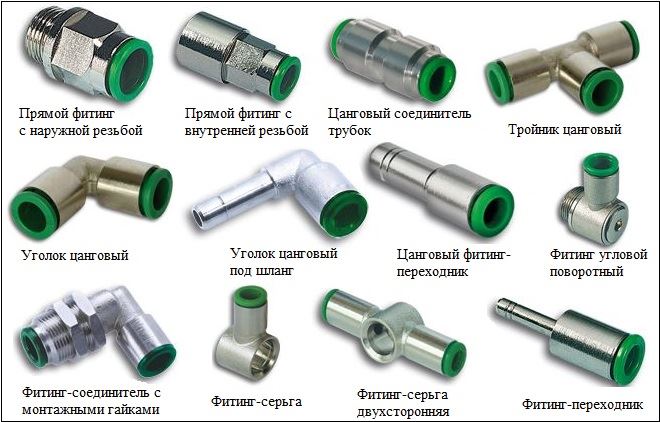
The high reliability of a collet for pipes is ensured not only by the collet itself, which exerts pressure on their inner walls, but also by the external fastening nut. The pipeline created with the use of such connections is characterized by high reliability, durability and, which is especially important, tightness.
Types of collet fittings
Collet-type clamps, depending on their purpose, are divided into three main categories:
- for pipes made of solid materials;
- for pipe structures made of semi-solid materials;
- for pipes made of soft plastic.
This classification of collet clamps allows for optimal selection of them for pipe connections. different types... Thus, the collet connection of pipes can be performed on products made of hard metal, softer metal-plastic and polypropylene, HDPE. It is also important that collet type pipe clamps can be used easily even by a non-professional.

Application features
When choosing collet-type clamps for installing a pipeline, the diameter of the pipes should be taken into account first. How accurately the diameter of the fittings corresponds to the transverse size of the pipes will determine not only the reliability, but also the tightness of the connection created.
In order to determine the number of connecting elements, as well as in which place of the pipeline the collet straight fitting will be used, and in which it will be angled, it is necessary to prepare a detailed drawing of the future pipeline system. After the preparation of the drawing, according to which it should be clear how all sections of the future system will be located, the pipe rolling for its installation is cut into pieces of the required size. Naturally, for each of the joints of the future pipeline, it is necessary to select the appropriate clamp.

Collet fitting "tube-tube-tube" with fasteners
The installation itself, for which collet-type fittings are used, is performed in the following sequence:
- First, the collet is placed on the inside of the pipe.
- A special nut is screwed onto the outer part of the connecting element. Thus, the collet coupling begins to operate as follows: its inner part expands the pipe from the inside, and the outer part is compressed with a nut.
- With the second pipe, which is used in the joint being formed, exactly the same steps are performed.
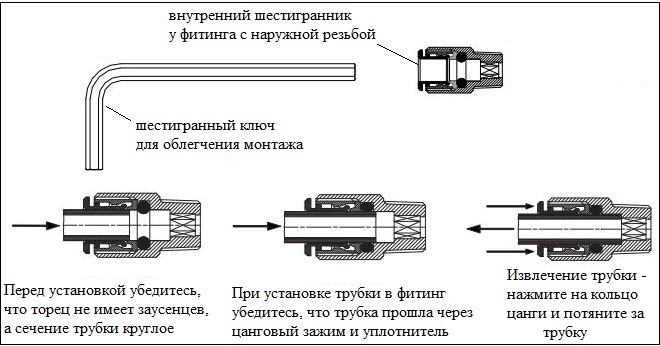
It should be borne in mind that collet-type clamps exert significant pressure on the elements to be connected, so they must be used very carefully. By overtightening the fastening nut, you may be faced with the fact that the pipe made of plastic will simply burst. That is why, when connecting with clamps of this type plastic products (especially those made of HDPE), it is necessary to adjust the force applied when tightening the fastening nut.
The process of proper use of collet type fittings is well demonstrated by photo and video tutorials that are easy to find on the Internet.
Main advantages and disadvantages
Clamps used to connect pipes, the design of which is a collet, began to be used relatively recently, but have already become popular among professional specialists and DIYers. The reason for this popularity lies in the advantages of these connectors over conventional fittings.
Low cost
This parameter consists of both the price of the clips themselves and the cost of their installation, which does not require the use of expensive equipment and special tools. It is also important that the replacement of such connecting elements, if required, will also not be associated with serious financial costs.
AvailabilityTo purchase collet-type fittings for pipes of almost any diameter today does not present any particular problems. In addition, on the modern market you can find collet-type clamps of any standard size, as well as designed for pipes made of various materials.
Ease of useTo learn how to properly connect pipes with collet clamps, it will take very little time and a minimum set of tools used.
Durability of the created connectionUnder normal operating conditions of the pipeline, the collet-type clamp can serve for more than a dozen years. Only significant mechanical loads and corrosion processes occurring in the pipeline are able to disable it.
ReliabilityThis advantage of collet clamps is ensured by both the mechanical characteristics of the formed joint and its exceptional tightness.
ReusableUnlike welds and fittings, which connect to plastic pipes by heating, the collet connectors can be used repeatedly. Such an important quality of collet clamps makes it possible to significantly simplify the process of repairing pipelines for the installation of which they were used. In addition, the reusability of push-in fittings allows replacement of individual sections of the pipeline without dismantling the entire system.

If we talk about the disadvantages of collet-type clamps, then the most significant of them should be attributed to the fact that such connecting elements weaken over time. This leads to leaks in piping systems. Meanwhile, it is not difficult to eliminate the leakage that has arisen for this reason: for this it is enough to tighten the collet fitting.
It is because of this lack of collet clamps that they should be placed in those places of the pipeline where direct access to them is provided. Fitting elements, the basis of which is a collet, cannot be used inside walls and other building structures. Tightening of collet fittings to improve their tightness is performed, as a rule, no more than once a year.
conclusions
To summarize all of the above, we can say that fittings, the basis of which is a collet, are a worthy alternative to other types of connecting elements. The use of such clamps allows you to quickly and without significant labor costs create a connection that will be distinguished by high reliability, tightness and durability. The value for money of the collet fittings is optimal. It is also convenient that today you can buy collet-type clamps for pipes of almost any diameter in most stores selling goods for construction and repair.
Considering the fact that collet fittings should be placed only in accessible places of pipelines, an important requirement for such connecting elements is their aesthetic appeal. In this regard, there are no complaints about collet clamps: even in the photo, they look presentable and do not introduce dissonance into the interior design.
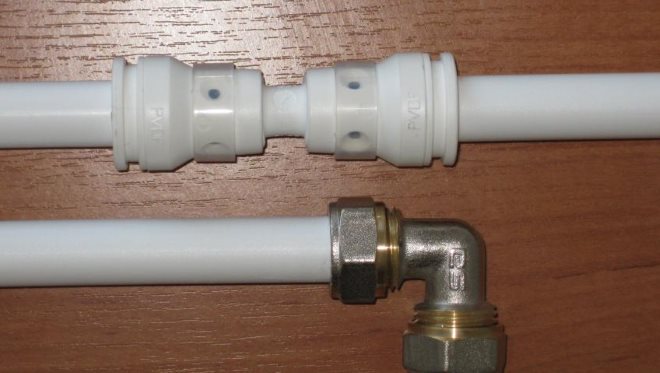
An important quality of collet-type clamps is the fact that it is possible not to invite a team of qualified specialists to install a pipeline using them. In order to properly install such fittings, it is enough to be able to hold an adjustable wrench in your hands and have at least the initial skills in working with various technical devices. Such a quality, which distinguishes the collet type fitting devices, not only simplifies, but also reduces the cost of pipeline installation using them.
Meanwhile, when choosing collet-type clamps for mounting a pipeline system, one should not forget about their most significant drawback, which is that they must be periodically tightened in order to restore their tightness. This, as indicated above, imposes serious restrictions on the use of this type of fittings for the installation of pipelines laid in hard-to-reach places (for example, in walls or in other building structures). In cases where it is not possible to provide access to the pipe joints, it is better to use other types of fittings to create a connection or to connect the pipes by welding.
When carrying out plumbing work, it is very often necessary to connect pipes. This can be done by different methods, the choice of which depends on the purpose of the pipeline, the material from which the parts are made, and other factors. For example, a flared pipe joint is usually used to simplify installation while increasing the reliability of the joint. Let's get acquainted with the features of some compounds.
The nuances of the socket connection of parts
The socket method of joining parts is very simple. The edge of one pipe has a larger diameter, it is this that forms the socket into which the end of the other element is inserted. To make the connection tight, a special rubber O-ring is used, inserted into the socket, or another seal. Installation of a pipeline with connections of this type does not present any particular difficulty and resembles the assembly of a designer. There are varieties of socket connections.
Option # 1 - without O-ring
The method is very often used to connect sewer cast iron pipes... Details are measured. The inserted element is laid on wooden blocks and sawn off along the marked line. The end of the outer part of the part must be free of cracks or notches and strictly perpendicular to the pipe axis. The prepared pipe is inserted into the socket. The gap inside it must be closed. Oiled hemp or tarred flax is used as a sealant. The first layer is inserted into the pipe with a ring, so that the ends of the strands do not fall into the part. The seal is stamped with a hammer and screwdriver.
The remaining layers of material are stacked in the same way until about two-thirds of the depth of the socket is filled. The last layer is a sealant without impregnation, which can prevent adhesion to the solution. The remaining distance to the end of the pipe is filled with cement mortar or, asbestos-cement mixture, bitumen mastic and similar compounds.
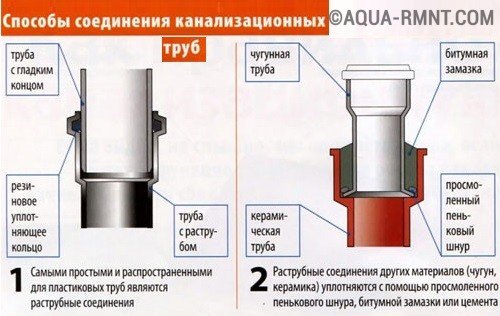
To seal the socket joint of pipes without a sealant, tarred flax or oiled hemp is used
Option # 2 - with O-ring
It is considered one of the main methods of connecting plastic pipes. In this case, tightness is ensured by a rubber ring, which is clamped between the flat end of the pipe and the walls of the socket. The seal, which can be either with special plastic inserts or without them, allows to partially compensate for possible misalignment of the axes of the connected parts. However, uneven deformation of the seal shoulder on the ring can cause leaks in the joint area. Therefore, the curvature of the axis should be no more than the pipe wall thickness per each running meter pipeline.

When installing a flare connection with an O-ring, you need to monitor the alignment of the centers. Otherwise, the distortion of the pipe will provoke deformation of the seal and, as a result, insufficient sealing of the connection.
Some manufacturers produce models of tees and elbows not at right angles, but at an angle of 87 °. Thus, the pipe, which is laid at a slope, enters the socket without distorting the rings. During installation, to prevent damage to the seal, the smooth end of the pipe is chamfered and lubricated with soap, glycerin or silicone. It is forbidden to use oils. A socket connection with an O-ring is performed as follows:
- We check the presence of an O-ring in the socket and a chamfer at the smooth end of the pipe. We clean the parts from possible contamination, apply grease.
- We place the smooth edge of the structure all the way into the bell and set a mark.
- Carefully remove the part from the socket, pushing it no more than 11 mm, focusing on the previously set mark. The resulting gap will compensate for temperature changes in pipe length. On average, one socket compensates for the elongation of a two-meter fragment of the pipeline.
If you want to connect pipes from different materials, special transition pipes are used.
Option # 3 - socket weld
Resistance socket welding is intended for plastic parts and is carried out using special equipment... In the process of connection, a mechanical or manual welding machine is used, equipped with special devices for heating the elements. This is a mandrel designed to melt the inner surface of a part, and a sleeve that heats up the outer part of the pipe.

Polypropylene pipes are connected by socket welding. For this procedure, a special welding machine is used that heats the parts to the desired temperature.
The connection process is quite simple. A set of sleeve-mandrel is selected, corresponding to the diameter of the pipes to be connected. The fixtures are installed on the device platform and heated up. Parts are put on the equipment and heated to the required temperature. After it is reached, the elements are quickly and accurately removed and connected with a precise movement until they stop. The joint is left motionless until the plastic has cooled and completely hardened.
Collet connection of parts
The collet connection of pipes, which is widely used in the installation of plastic pipelines, is carried out using special devices. These are the so-called collet or clamp fittings. The device is a combination of a fitting, a pipe connector, and a collet, a spring-loaded split bushing. The collet creates additional internal pressure on the pipe, pressing it against the fitting chuck, which makes the connection tight and reliable.

When making a collet connection, be very careful to tighten the fitting so as not to overtighten it. Otherwise, the pipe may burst.
Installation of the connection is quite simple and does not require special equipment and skills. The main thing is to choose the right clamping fitting. It must match the type and diameter of the pipe. In some cases, a special fitting is purchased, at one end of which there is a collet, and at the other end there is a thread or nut of the required diameter. In general, the selection of a clamping device is not difficult, since most accessories and plumbing fixtures are standard sizes.
Installation of the part is carried out as follows. A collet is carefully inserted into the inner cavity of the pipe, and the tightening outer fitting nut is tightened with an adjustable wrench. It so happens that the part is tightly clamped and hermetically fixed. The procedure for the second connected pipe is the same. During the installation process, it is important to remember that the collet exerts a sufficiently strong pressure on the part and if you overtighten the clamping nut, the pipe may burst. This is especially true for plastic parts. Therefore, it is recommended to measure the forces when tightening the nut and to perform this operation with sufficient care.
Correct threaded joint
A threaded pipe joint is a detachable joint made using a spiral or helical surface, which is called a thread. This is one of the most common connections due to its tightness, reliability and ease of installation. To implement it, you will need to tighten two elements that have threads of a suitable diameter. To separate the joint, you will need to perform the steps in the reverse order, that is, simply untwist the parts.
Piping sections with threaded connections are usually installed where there is a possibility of periodic inspection. This is due to the fact that over time, for various reasons, the thread may "loosen" and the fastener will lose its tightness. Then you need to spend renovation work... The thread is usually rolled onto pipes using special equipment, but you can also cut it manually using a die.
The operation is performed as follows:
- The part of the required size is cut off with an allowance for the threaded part. The pipe is fixed in a vice so that the possibility of scrolling is completely excluded.
- Carefully and neatly, the die is attached to the end of the part. Even a slight distortion when putting on the die is unacceptable, otherwise the thread will turn out to be curved.
- Cutting of the required number of turns is carried out. To facilitate the procedure, the pipe can be lubricated with machine oil. A jammed die is likely to be retarded by cut chips. To remove it, one turn back is made, after which the work continues.
If you have to thread a pipe that is too close to a wall or other plane that does not allow a full rotation of the tool, ratchet ratchets are used.
![]()
When making a threaded connection, a seal is usually required. It can be any plumbing reel
Important! When making a threaded connection, a seal is usually required. In the role of a sealant, they can act as special tapes such as fum or traditional impregnated flax or hemp.
Most plumbing pipe connections are straightforward. If you follow the instructions correctly, they can be done efficiently and quickly enough. The main thing is to correctly choose the appropriate type of connection and select all the elements necessary for it. In this case, you can be sure of the reliability and strength of the performed pairing.
2015-01-13 11:46:33
1. "... a socket joint of pipes is usually used to simplify installation and at the same time increase the reliability of the joints." This is not entirely true. In internal sewerage it is simply impossible to connect h / to pipes in another way. The use of socketless c / c San Gabin pipes, for example, with rubber sleeves and stainless steel clamps, is another topic. 2. “The method is very often used to connect sewer cast iron pipes. Details are measured. The inserted element is laid on wooden blocks and sawn off along the marked line. " For your information, b / c pipes are not cut, but are cut with a chisel !!! 3. "Oiled hemp or tarred flax is used as a sealant." Resin and white rope are used. The first protects the connection from decay, the second creates adhesion to the cement joint. 4. "... the curvature of the axis should not be more than the pipe wall thickness per each running meter of the pipeline." Wall thickness has nothing to do with it. In case of bending, the smooth end of the pipe is squeezed out from the ring - as a result of this, the contact pressure decreases. The larger the bending angle, the lower the ring compression and contact pressures. The permissible bending angle is determined by the geometry of the joint (flare, ring and spigot, as well as the hardness of the elastomer). 5. "Resistance socket welding is intended for plastic parts and is carried out using special equipment." Most likely, it is intended for welding pipe products made of polyolefins, non-polar thermoplastics. For polar polymer (PVC-U) cold weld-bonding is used. 6. "The main thing is to choose the right clamping fitting." Nothing should be picked up. It is necessary to follow the regulations of the manufacturer (supplier) of specific pipe products, then selective selection will not be required. 7. "Threaded pipe connection is a detachable joint made using a spiral or screw surface, which is called a thread)". Threaded connection on internal pipelines should be made by screwing a coupling (fitting) with an internal pipe (apex angle 55 degrees) thread onto a pipe (weft, roll, etc.) with an external thread having 11 threads (short thread) up to escape, while it is necessary to use seals made of flax (impregnated with white, red lead, etc. in order to prevent decay) or FUM, or synthetic threads. Conclusion: Such superficial publications should not be allowed. (see the book Otstavnov A.A. "Water supply and wastewater disposal public buildings», ABOK. 2011.400 s.) Plumbing work are called special. Plumbing fitters were trained in the USSR for two years with a ten-year or three years with the issuance of a certificate of completion of a ten-year and 4-5 grade of a plumber.



